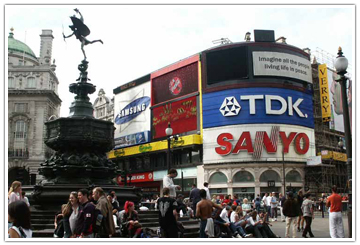London Travel Guide – Itinerary, Museums, Tower Bridge, Underground and more
The sheer name brings several things to mind. The Queen, palaces, WW II, Cosmopolitan culture to name a few. London can also be used as a base to travel to Europe. Currently, I have just listed main sites in London and have included suggested some itineraries below.
Over a period of time, I want to have individual pages for all the sites. London is one of the most famous cities in the world. There are still some London attractions with free admission! They include (at the time of writing) the British Museum, the Natural history Museum, science museum, Sir John Soane’s Museum, and the Museum of Garden History.
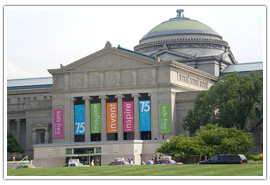
Traveling from London by plane: Heathrow is one of the biggest airports in the world and handles the majority of traffic to and from the UK. Gatwick airport is the largest and most popular southeastern airport and is approximately 28 miles from Central London, making the airport easily accessible from the city’s major train stations. Handling thousands of passengers on a daily basis, UK residents and travelers alike can fly to hundreds of destinations worldwide including countries within the USA, India, and Europe to name a few.
London Attractions
The main art galleries – the National Gallery, National Portrait Gallery, Tate Gallery, Wallace Collection are all free. For suggested London Itineraries, see London Itineraries. For Nearest tube stations to London attractions, see here: London Places to see and Nearest Tube Stations.
London’s main sights: London Itineraries Trafalgar Square London Museums St Paul’s Cathedral Kew Gardens Westminister Big Ben Lords Cricket Madam Tussauds London Eye Sherlock Homes’ home Leicester Square Hyde Park Wimbledon London Weather London Underground Richmond Park Holland Park The Pembury Tavern East London Thirteen East London Markets
Tower Bridge
The beginnings of London can be dated with some exactitude to the invasion of the Romans in 43AD. Prior to the Roman invasion, there was no permanent settlement of significance on the site of London.
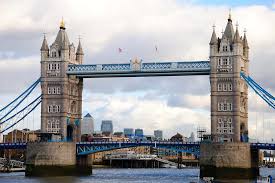
The commander of the Roman troops was one Aulus Plautius. He pushed his men up from their landing place in Kent towards Colchester, then the most important town in Britain. The Roman advance was halted by the Thames, and Plautius was forced to build a bridge to get his men across.
The Trafalgar Square
The Trafalgar square. Its one of the most refreshing places in the world
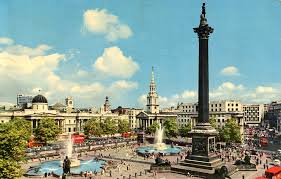
Big Ben Icon of London
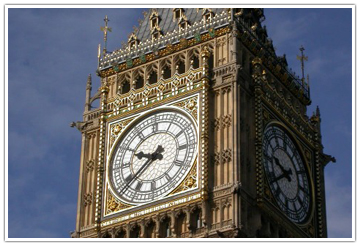
The Roman settlement on the north side of the bridge, called Londinium, quickly became important as a trading center for goods brought up the Thames River by boat and unloaded at wooden docks by the bridge. About the year 200 AD, a defensive wall was built around the city.
For well over a millennium the shape and size of London was defined by this Roman wall. The area within the wall is now “the City”, London’s famous financial district. Traces of the wall can still be seen in a few places in London.
London continued its growth under the late Roman Empire, and at its peak, the population probably numbered about 45,000.
But, as the Roman Empire creaked its way to a tottering old age, the troops defending London’s trade routes were recalled across the Channel, and the city went into a decline which lasted several centuries.
British Museum
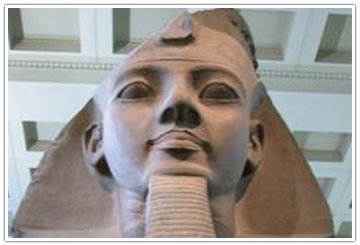
In some ways the medieval history of London can be said to have begun on Christmas Day, 1066, when William the Conqueror was crowned king of England. William granted the citizens of London special privileges, but he also built a castle in the southeast corner of the city to keep them under control.
This castle was expanded by later kings until it became the complex we now call the Tower of London. The Tower acted as a royal residence, and it was not until later that it became famous as a prison.
When Henry VII took the throne in 1485, the population of the city of London was about 75,000. By 1600 that figure had risen to 200,000. London under the Tudors was a prosperous, bustling city.
London Travel Guide
The Victorian city of London was a city of startling contrasts. New building and affluent development went hand in hand with horribly overcrowded slums where people lived in the worst conditions imaginable. The population surged during the 19th century, from about 1 million in 1800 to over 6 million a century later. This growth far exceeded London’s ability to look after the basic needs of its citizens.
In 1904 the first motor bus service in London began, followed by the first underground electric train in 1906, but perhaps more notable was the spate of new luxury hotels, department stores, and theatres which sprang up in the Edwardian years, particularly in the West End. The Ritz opened in 1906, Harrod’s new Knightsbridge store in 1905, and Selfridges in 1907.
The outbreak of WWII precipitated the defining moment of the century for Londoners – the Blitz. During the dark days of 1940 over a third of the City was destroyed by German bombs, and the London Docks largely demolished. Here is some more information on places to see and things to do in London.
Shops on Bond Street
Sir John Soane’s Museum
Speakers Corner
Stonehenge England Facts
The British Museum In London
The London Dungeon
The Natural History Museum
The Victoria and Albert Museum Facts
Things To Do In Inverness Scotland
Top 10 Things To See In London
Tower Bridge London
The tradition of Afternoon Tea
Trafalgar Square
Victoria Station
West End Theatres
What To Do If You Lost Your Passport While In England
Where To Shop In London
Winter In England Things To Do
My suggestion is to spend at least 5 days in London to decently explore this wonderful city. See London Itineraries
England Train Travel – Information on getting a train ticket, the train system, train travel in England suggested Itineraries for London See London Itineraries
More Info On- Best Sights in London to See, Best Season To Go To England, Daily life in Britain

